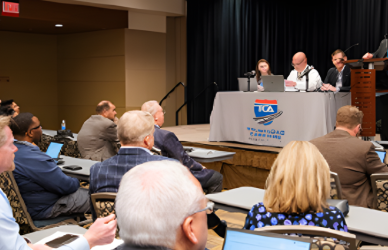The safety of truckers across the country is compromised when there is a lack of accessible parking. To address this concern, the leaders of the American Trucking Associations (ATA) and the Owner-Operator Independent Drivers Association (OOIDA) are calling on the Department of Transportation to prioritize funding from the Infrastructure Investment and Jobs Act to address the issue.
Negative consequences of limited parking
As truck drivers, you are well aware that truck parking shortages are a national safety concern. An inadequate supply of truck parking spaces can result in two negative consequences: first, tired truck drivers may continue to drive because they have difficulty finding a place to park for rest; and second, truck drivers may choose to park at unsafe locations, such as on the shoulder of the road, exit ramps, or vacant lots, if they are unable to locate official, available parking.
Jason’s Law
This was the story behind Jason’s Law. In 2009, truck driver Jason Rivenburg was shot and killed in an abandoned gas station 12 miles away from his destination. He was ahead of schedule, and the delivery site did not allow trucks to show up early. His widow took this incident and sought to change the landscape for truck drivers and their safety when looking for a safe place to park and rest. The bill to address the need for accessible parking passed and became known as Jason’s Law under the Highway Restoration Bill in 2012.
Recent findings from a 2019 DOT report on Jason’s Law show that 98% of drivers “regularly experience problems finding safe parking” – up from 75% in 2015.
Letter to Transportation Secretary Pete Buttigieg
Last month, ATA President and CEO, Chris Spear, and OOIDA President and CEO, Todd Spencer, sent a letter to Transportation Secretary Pete Buttigieg requesting that the department work with the White House, state DOTs, Congress, and industry stakeholders “to ensure that appropriate actions are taken to mitigate the growing truck parking shortage.”
Their letter quotes data from a 2018 report from the trucker app Trucker Path showing that 70% of commercial motor vehicle drivers were forced to violate federal hours-of-service regulations to search for safe, legal parking.
“Ultimately,” the letter states, “the pervasive truck parking shortage can be explained with simple math – there are about 3.5 million truck drivers in the United States and approximately 313,000 truck parking spaces nationally; for every 11 drivers, there is one truck parking space.”
Looking ahead
The letter asks Buttigieg to prioritize funding for grant programs that would increase truck parking capacity and calls for the support of proposed legislation that would “establish a competitive discretionary grant program” while providing $755 million of federal funding for truck parking projects nationwide through fiscal year 2026.











